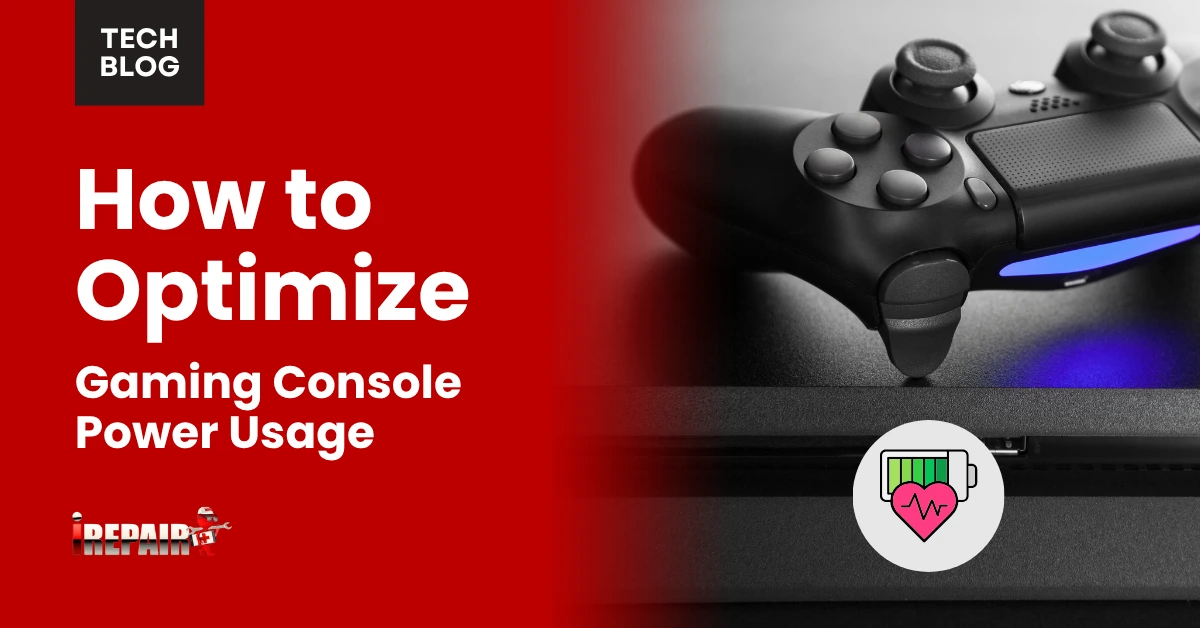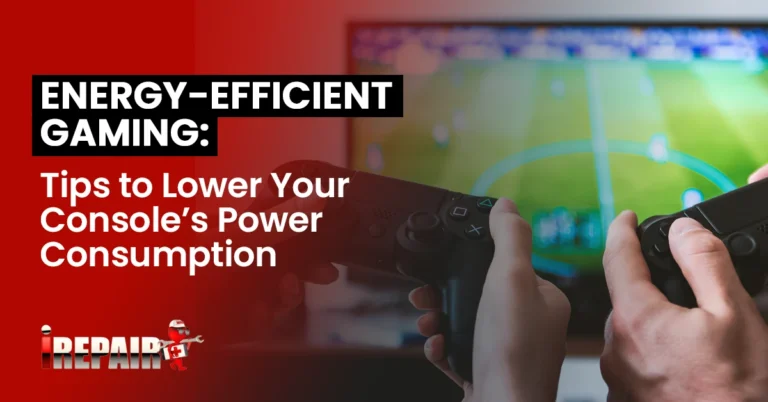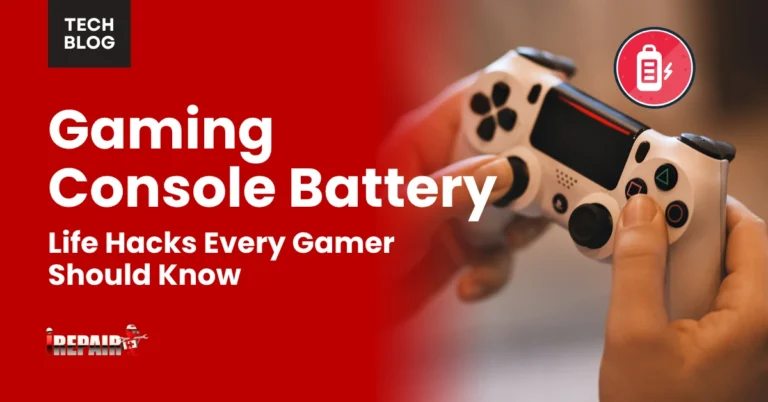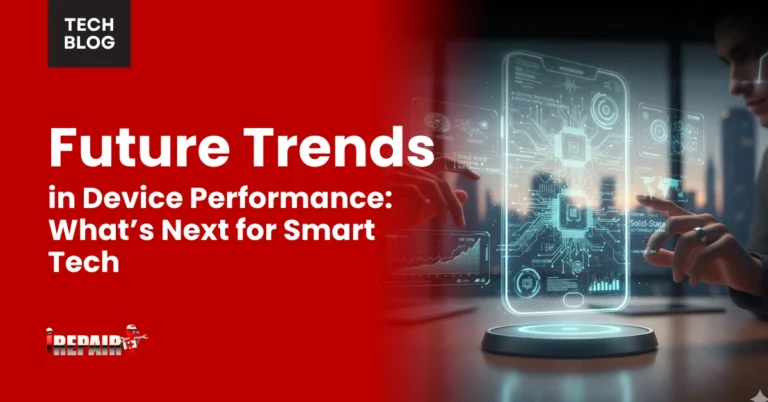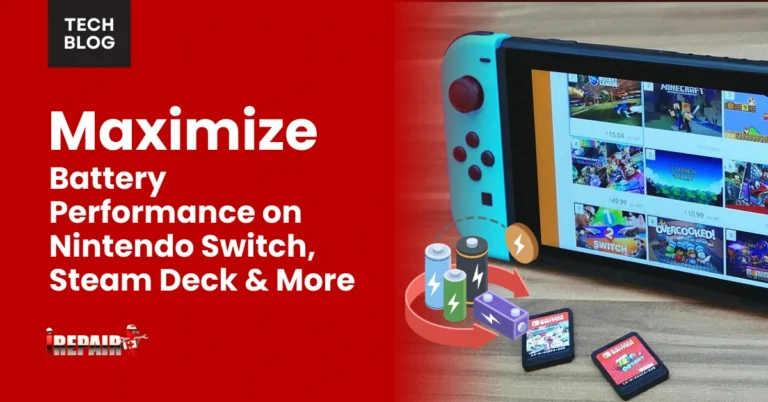How to Optimize Gaming Console Power Usage
To optimize your gaming console’s power usage, enable eco mode and auto-shutdown timers in your settings. Unplug controllers and accessories when not in use, and fully power down your console instead of leaving it in rest mode. Keep vents clean and guarantee proper ventilation to prevent overheating. Using smart power strips and monitoring real-time consumption can help identify energy waste. Discover more ways to slash your console’s energy footprint while extending its lifespan.
Understanding Power Consumption Across Different Console Models
The latest gaming consoles differ considerably in their power consumption, with each model designed to balance performance and energy efficiency differently. The PS5 and Xbox Series X typically draw between 160-200 watts during gameplay, while the Nintendo Switch uses only 10-18 watts due to its portable design.
You’ll find significant console energy efficiency variations even within the same brand family. The Xbox Series S, for instance, uses about 30% less power than its Series X counterpart. Modern consoles include advanced power management features that help reduce consumption when possible. These include variable power states that adjust based on gaming demands and improved sleep modes that maintain essential functions while minimizing energy use. Understanding these differences can help you make informed decisions about which console best suits your gaming and energy-saving goals.
Smart Settings and Power-Saving Features
Modern gaming consoles come equipped with powerful energy-saving features that you’ll want to activate right away. Start by enabling your console’s eco mode, which optimizes performance while reducing power consumption. This setting automatically adjusts screen brightness, processing power, and background activities based on your gaming needs.
To maximize eco-friendly gaming practices, set up auto-shutdown timers that put your console to sleep after periods of inactivity. You can also integrate your gaming setup with smart home energy integration through compatible apps and devices, allowing you to monitor and control power usage remotely. Don’t forget to disable features like instant-on and background downloads when they’re not essential. These small adjustments can considerably reduce your console’s energy footprint while maintaining an enjoyable gaming experience.
Best Practices for Daily Console Usage
While enjoying your favorite games, implementing smart daily habits can markedly reduce your console’s power consumption. Make it a routine to fully shut down your console rather than leaving it in rest mode when you’re done playing. Enable energy-saving settings that automatically power down the system after periods of inactivity.
Keep your console well-ventilated and dust-free to maintain ideal console performance optimization. Place it in an open space with good airflow, and regularly clean the vents with compressed air. When you know you won’t be gaming for several days, unplug the console completely to eliminate phantom power draw.
Schedule gaming sessions during off-peak electricity hours when possible, and consider using a smart power strip that cuts power to peripherals when the console is off.
Peripheral Management and Energy Efficiency
Managing your gaming peripherals effectively can dramatically reduce overall power consumption. Start by unplugging controllers and charging stations when they’re not in use, as they continue drawing power even when idle. Consider using a smart power strip that automatically cuts power to accessories when your console is off.
For cooling and ventilation efficiency, guarantee your console has proper airflow by keeping it in an open space and regularly dusting vents. Overheating leads to increased power consumption and can damage your system. When selecting external tools and accessories, opt for energy-efficient options like LED-backlit controllers and displays that match your console’s capabilities. Don’t overlook the impact of auxiliary devices, headsets, webcams, and external storage drives, which all contribute to your setup’s total power draw.
Measuring and Monitoring Your Console’s Energy Impact
Understanding your console’s actual power consumption starts with accurate measurement. You can track your gaming console’s energy usage through several reliable methods. Using a basic electricity usage monitor that plugs between your console and wall outlet will give you real-time power readings.
Many modern smart meters and home energy monitoring systems can also break down your console electricity consumption by time of day and usage mode. When following this gaming console energy guide, record measurements during different activities: startup, gameplay, streaming, and standby modes. This data helps you identify which activities consume the most power.
Compare your findings against manufacturer specifications to verify your console operates efficiently. If you notice unusually high readings, it may indicate settings that need adjustment or potential hardware issues requiring attention.
Frequently Asked Questions
Does Using Third-Party Controllers Affect Power Consumption Compared to Official Ones?
Third-party controllers typically consume similar or slightly less power than official ones, as they often use comparable battery technology. However, you’ll notice that cheaper controllers might drain faster due to lower-quality components. While the power difference is minimal, you’re better off focusing on controller usage habits, like turning them off when not in use, rather than worrying about brand-specific power consumption variations.
Can Firmware Updates Increase a Console’s Power Usage Over Time?
While firmware updates can potentially affect your console’s power consumption, they typically don’t increase it over time. In fact, manufacturers often include power optimization improvements in system updates. You’ll usually see better energy efficiency with updated firmware since it can improve system performance and power management. However, if you notice higher power usage after an update, it’s more likely due to added features that you can disable.
How Does Playing Online Multiplayer Games Impact Energy Consumption Versus Offline Gaming?
Online multiplayer gaming typically consumes more power than offline gaming since your console needs to maintain a constant internet connection and process real-time data from other players. You’ll see around 10-20% higher energy usage when playing online due to the additional network features, server communication, and voice chat functions. If you’re concerned about power consumption, you’ll save more energy by playing single-player or local multiplayer games instead.
Does Installing Games on External Drives Use More Power Than Internal Storage?
External drives typically draw additional power compared to your console’s internal storage since they require their own power supply or USB power. You’ll notice slightly higher energy consumption when using external drives, especially with powered HDDs rather than SSDs. However, the difference is minimal, usually just 2-5 watts extra. If you’re concerned about power usage, stick to your console’s internal storage when possible or opt for energy-efficient SSDs.
Will Using Power-Saving Modes Affect My Game Save Data or Downloads?
No, using power-saving modes won’t affect your game save data or active downloads. When you enable these modes, your console safely stores all save data before entering low-power state. However, if you’re downloading games, the console will first complete or pause your downloads before switching to power-saving mode. You can also set your console to finish downloads while in power-saving mode through your system settings.

